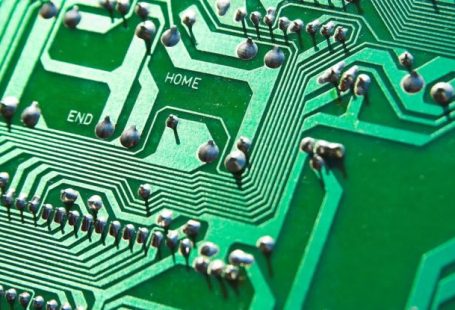In the fast-paced world of technology, staying ahead of the curve is essential for maintaining optimal performance. When it comes to micro PCs, one crucial factor that often gets overlooked is the role of firmware updates. These updates play a significant role in enhancing the overall performance and functionality of micro PCs, ensuring that they operate at their best. In this article, we delve into the importance of firmware updates and how they can impact the performance of micro PCs.
Enhanced Security and Stability
Firmware updates are not just about adding new features; they also play a crucial role in enhancing the security and stability of micro PCs. As cyber threats continue to evolve and become more sophisticated, manufacturers release firmware updates to patch security vulnerabilities and protect the system from potential attacks. By regularly updating the firmware, users can ensure that their micro PCs are equipped with the latest security measures, safeguarding sensitive data and preventing unauthorized access.
Improved Compatibility and Performance
Another key benefit of firmware updates is their ability to improve compatibility and performance. Manufacturers often release updates to address compatibility issues with new software or hardware components, ensuring seamless integration and optimal performance. Additionally, firmware updates can optimize the efficiency of micro PCs by fine-tuning settings and improving overall system performance. This can result in faster boot times, smoother operation, and better multitasking capabilities, ultimately enhancing the user experience.
Bug Fixes and Feature Enhancements
Firmware updates also play a vital role in addressing bugs and introducing new features to micro PCs. Bugs and glitches can hinder the performance of a system and cause various issues, such as crashes or system slowdowns. By regularly installing firmware updates, users can benefit from bug fixes that address these issues, ensuring a more stable and reliable system. Furthermore, manufacturers often introduce new features and enhancements through firmware updates, providing users with additional functionality and improving the overall user experience.
Extended Device Lifespan
Regular firmware updates can also help extend the lifespan of micro PCs by addressing hardware issues and improving overall system efficiency. By keeping the firmware up to date, users can ensure that their devices remain compatible with the latest software and hardware developments, prolonging their usability and longevity. Additionally, firmware updates can help prevent premature hardware failure by optimizing system settings and addressing potential issues before they escalate, ultimately increasing the lifespan of the device.
Best Practices for Firmware Updates
To fully harness the benefits of firmware updates and ensure optimal performance of micro PCs, it is essential to follow best practices when updating the firmware. Here are some tips to consider:
1. Regularly check for updates: Stay informed about the latest firmware updates released by the manufacturer and install them promptly to benefit from security patches, bug fixes, and new features.
2. Backup data: Before updating the firmware, make sure to back up important data to prevent data loss in case of any unforeseen issues during the update process.
3. Follow manufacturer instructions: Read the release notes and follow the manufacturer’s instructions carefully when installing firmware updates to avoid any potential issues or complications.
4. Keep track of performance: After installing firmware updates, monitor the performance of the micro PC to ensure that the updates have positively impacted the system.
Conclusion: Maximizing Micro PC Performance through Firmware Updates
In conclusion, firmware updates play a crucial role in enhancing the security, stability, compatibility, and performance of micro PCs. By regularly updating the firmware, users can ensure that their devices operate at their best, with improved efficiency, extended lifespan, and enhanced functionality. Incorporating firmware updates as part of a proactive maintenance strategy can help users stay ahead of potential issues, optimize system performance, and maximize the overall performance of their micro PCs.





